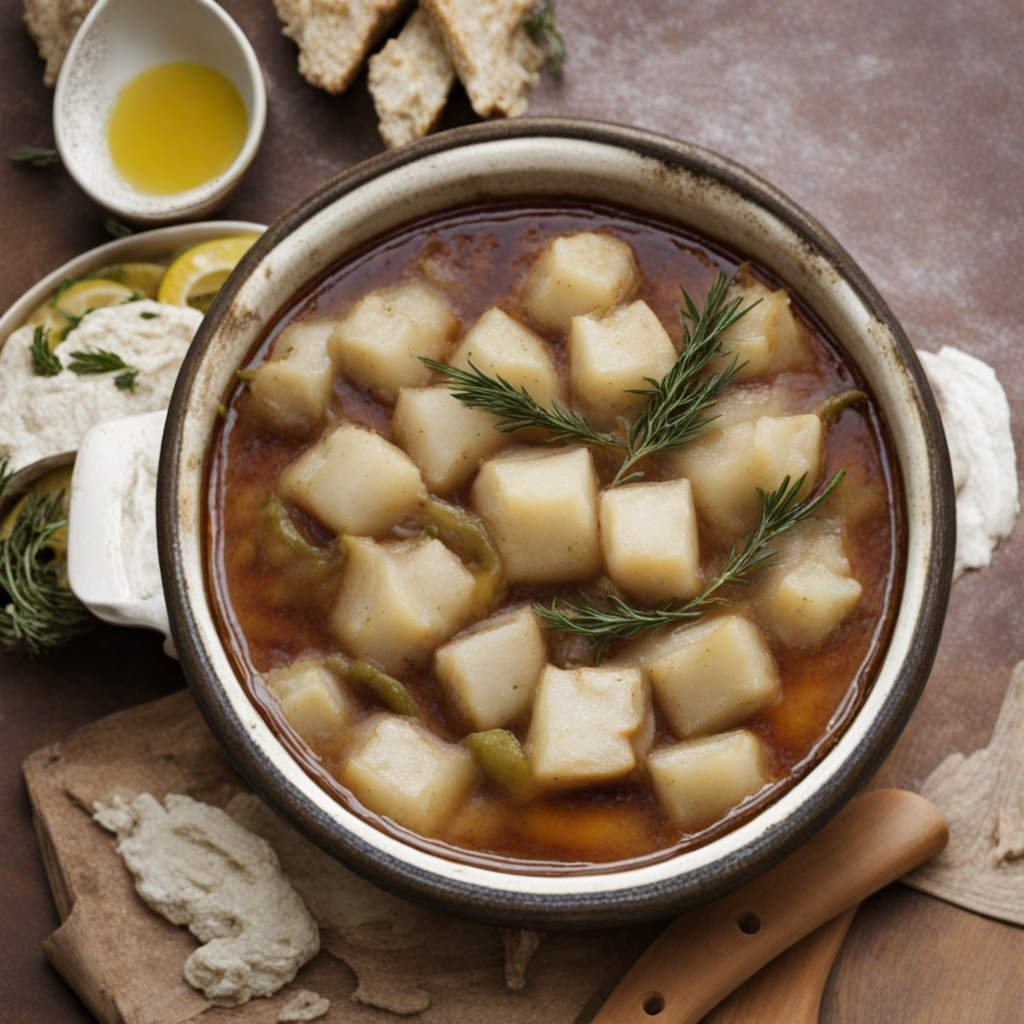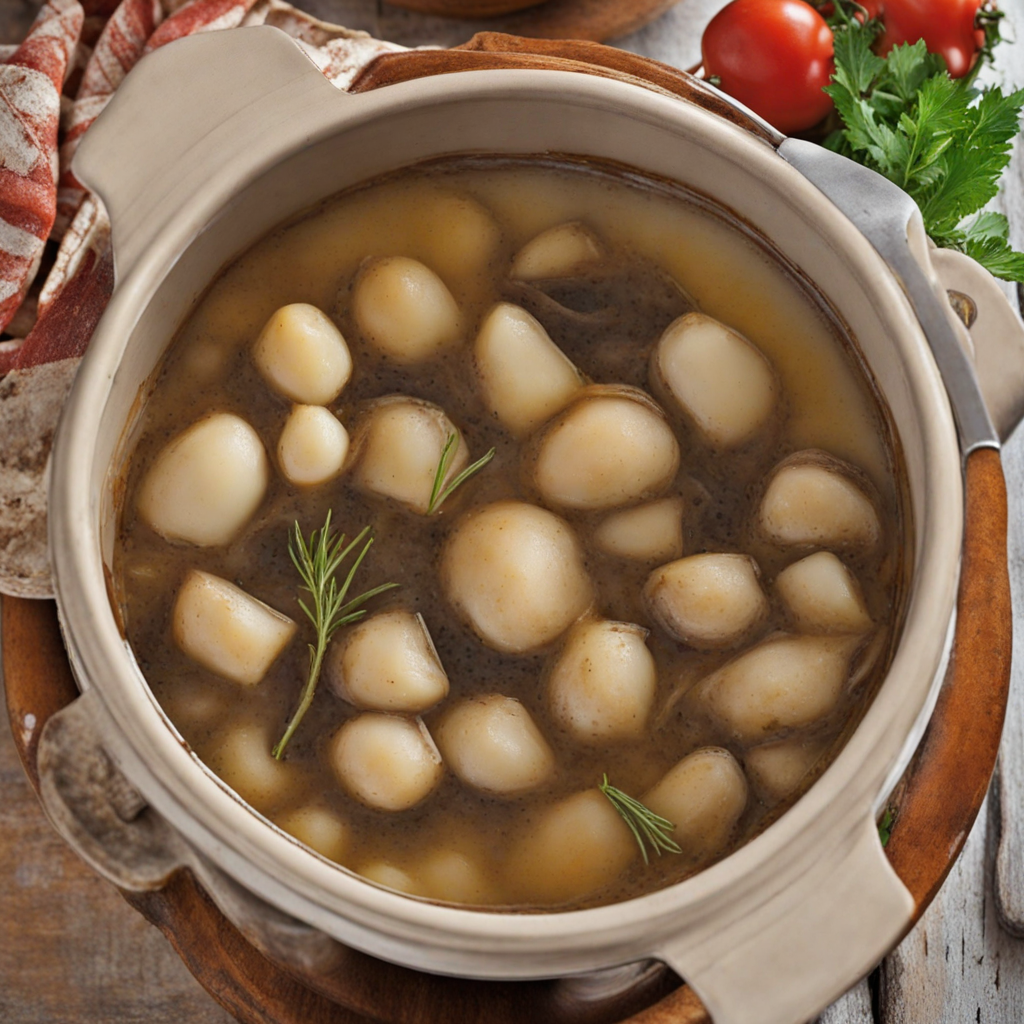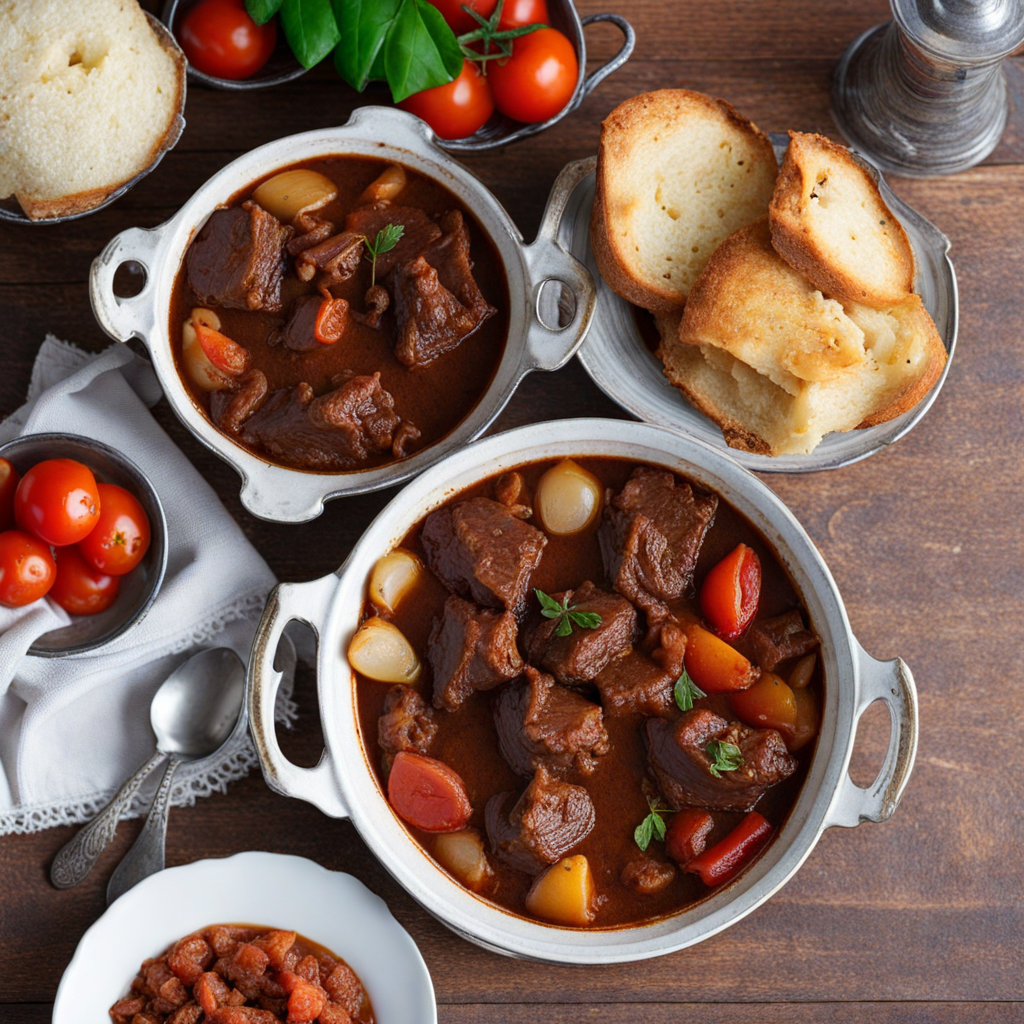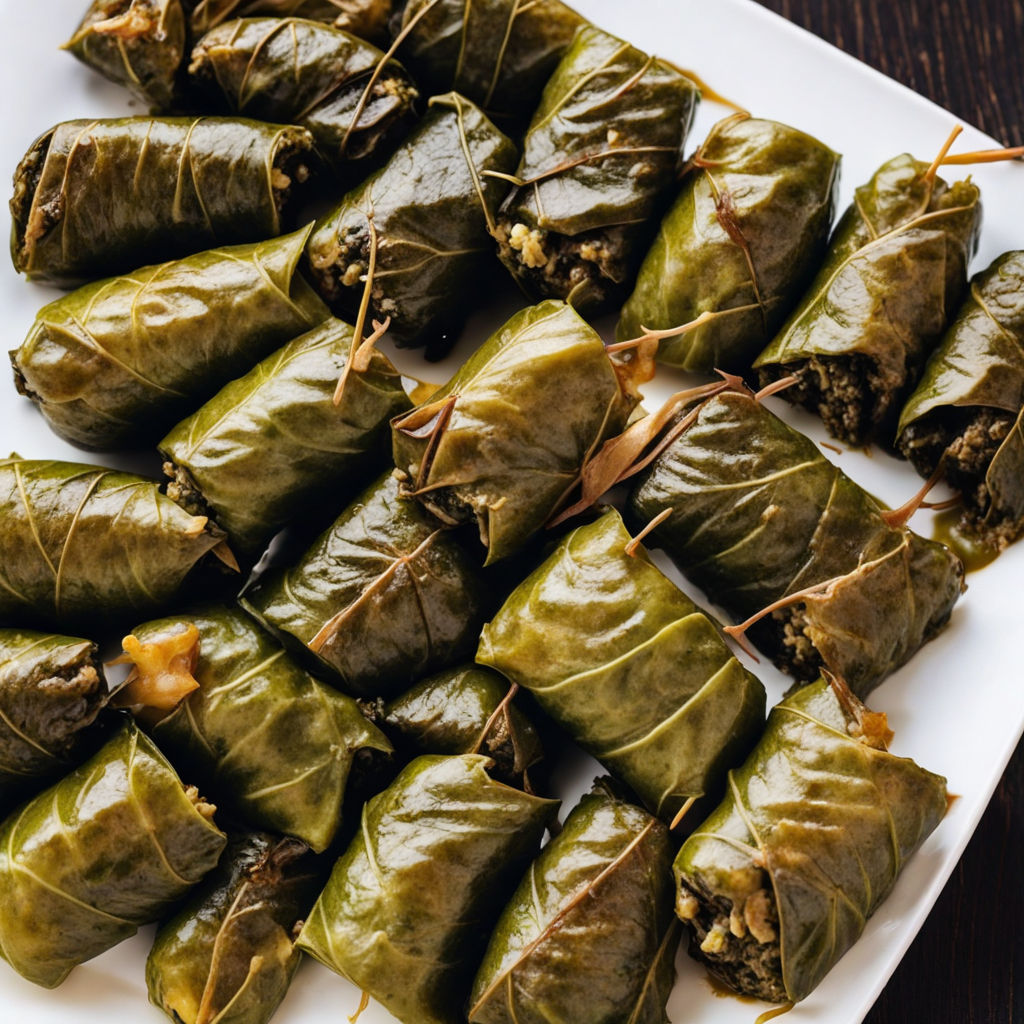Ofto Kleftiko
Ofto Kleftiko is a traditional Cypriot dish that tantalizes the palate with its rich flavors and comforting textures. This culinary delight features tender lamb, marinated with a blend of aromatic herbs and spices such as garlic, oregano, and lemon juice. The lamb is often slow-cooked in a sealed pot, allowing it to braise in its own juices, infusing the meat with a depth of flavor that is both savory and slightly tangy. The slow cooking method ensures that the lamb becomes incredibly tender, practically falling off the bone, while keeping the juices locked in for a succulent experience. The preparation of Ofto Kleftiko often involves the use of seasonal vegetables, such as potatoes, carrots, and onions, which are added to the pot to soak up the flavorful broth. This combination of ingredients creates a hearty meal that is not only satisfying but also showcases the bounty of Cypriot agriculture. The dish is typically served family-style, allowing everyone to dig into the communal pot, making it a perfect meal for gatherings and celebrations. The aroma that wafts through the air while it cooks is enough to make anyone’s mouth water with anticipation. When served, Ofto Kleftiko is often accompanied by crusty bread or a light salad, further enhancing the dining experience. Each bite offers a delightful contrast between the tender meat and the rustic vegetables, creating a symphony of flavors that represent the essence of Cypriot cuisine. Whether enjoyed during a festive occasion or a cozy family dinner, Ofto Kleftiko is a dish that invites you to savor the rich culinary heritage of Cyprus, leaving you with a lasting impression of warmth and hospitality.
How It Became This Dish
The History and Cultural Significance of Οφτό Κλέφτικο #### Origins Οφτό Κλέφτικο, often simply referred to as Kleftiko, is a traditional Cypriot dish that encapsulates the island’s rich history, agricultural practices, and cultural identity. The name "Kleftiko" is derived from the Greek word "kleftis," meaning "thief." The origins of the dish are steeped in the lore of the Cypriot mountains and the bandits (kleftes) who roamed the hills during the Ottoman period. These bandits were known for stealing livestock from wealthy landowners. To avoid detection, they would cook the meat in secret, underground pits, using the earth's heat to slow-roast the lamb or goat. The cooking method employed by the kleftes involved wrapping the meat in aromatic herbs and sealing it in clay, which not only preserved the flavors but also prevented the smoke and smell from being detected by their pursuers. This underground cooking method became a hallmark of Κλέφτικο, allowing the meat to become tender and infused with the flavors of the herbs used. #### Cultural Significance Over the centuries, Οφτό Κλέφτικο has transcended its origins as a clandestine meal for thieves to become a symbol of Cypriot hospitality and tradition. Today, it is a staple at festive gatherings, family celebrations, and communal events, representing the spirit of sharing and togetherness that is central to Cypriot culture. The dish is often made with locally sourced lamb or goat, which holds a significant place in Cypriot agriculture. The island's fertile lands provide an abundance of aromatic herbs, such as oregano, thyme, and rosemary, which are integral to the flavor profile of Κλέφτικο. This connection to the land and its produce highlights the importance of agriculture in Cypriot life, where the community often comes together to celebrate the harvest and the bounty of nature. #### Development Over Time The preparation of Οφτό Κλέφτικο has evolved over the years, reflecting changes in cooking practices and societal norms. While the traditional method of cooking in an underground pit remains beloved, modern adaptations have emerged. In contemporary kitchens, the dish is often prepared in a conventional oven or on a grill, making it accessible to a wider audience without sacrificing the essence of its traditional roots. As Cypriot cuisine began to gain international recognition, Κλέφτικο became a culinary ambassador for the island. It is frequently featured in Cypriot restaurants around the world, where it is celebrated for its robust flavors and tender texture. The dish is typically served with a variety of sides, such as roasted potatoes, fresh salads, and bread, allowing for a communal dining experience that mirrors its origins. The evolution of Οφτό Κλέφτικο has also been influenced by globalization and the influx of different culinary traditions. While the core recipe remains unchanged, variations incorporating different spices or cooking methods can be found, highlighting the dish's adaptability and the influence of diverse cultural practices on Cypriot cuisine. #### Culinary Techniques The preparation of Οφτό Κλέφτικο is an art form that requires both skill and patience. The process begins with marinating the meat, often overnight, in a mixture of olive oil, lemon juice, garlic, and a medley of herbs. This step is crucial, as it infuses the meat with flavor and tenderizes it. After marination, the meat is typically wrapped in parchment paper or foil, allowing it to steam and retain moisture during cooking. The cooking method is essential to achieving the tender, fall-off-the-bone texture that Κλέφτικο is known for. Traditionally, the meat would be placed in a hole dug in the ground, lined with hot stones, covered with more stones or earth, and left to cook for several hours. This method not only traps the heat but also creates a unique smoky flavor. In modern adaptations, the dish is often cooked in a heavy-duty pot or Dutch oven, creating a similar effect. #### Connection to Cypriot Identity Οφτό Κλέφτικο is more than just a dish; it is a reflection of the Cypriot identity. The practice of gathering for a communal meal resonates deeply with the island's traditions, where food serves as a medium for connection, storytelling, and the preservation of cultural heritage. The act of preparing and sharing Κλέφτικο is often accompanied by music, laughter, and the recounting of stories, reinforcing bonds between family and friends. Moreover, the dish embodies the resilience of the Cypriot people. Historically, Cyprus has experienced periods of conflict and division. However, the act of sharing a meal, particularly one as rich in history as Οφτό Κλέφτικο, fosters unity and a sense of belonging. It serves as a reminder of the island's agricultural roots and the importance of community, underscoring the idea that food can be a powerful tool for healing and reconciliation. #### Conclusion In conclusion, Οφτό Κλέφτικο is not merely a culinary delight; it is a symbol of Cyprus's rich history, cultural significance, and communal spirit. From its origins as a meal for thieves to its place as a cherished dish in modern Cypriot cuisine, Κλέφτικο represents the island's connection to its land, its people, and its traditions. As it continues to evolve and adapt to contemporary tastes, Οφτό Κλέφτικο remains a testament to the enduring power of food to bring people together and celebrate the diverse tapestry of cultures that define Cyprus. Whether enjoyed at a family gathering or a festive event, it invites diners to partake in a slice of history and to savor the flavors of a land rich in stories and tradition.
You may like
Discover local flavors from Cyprus







